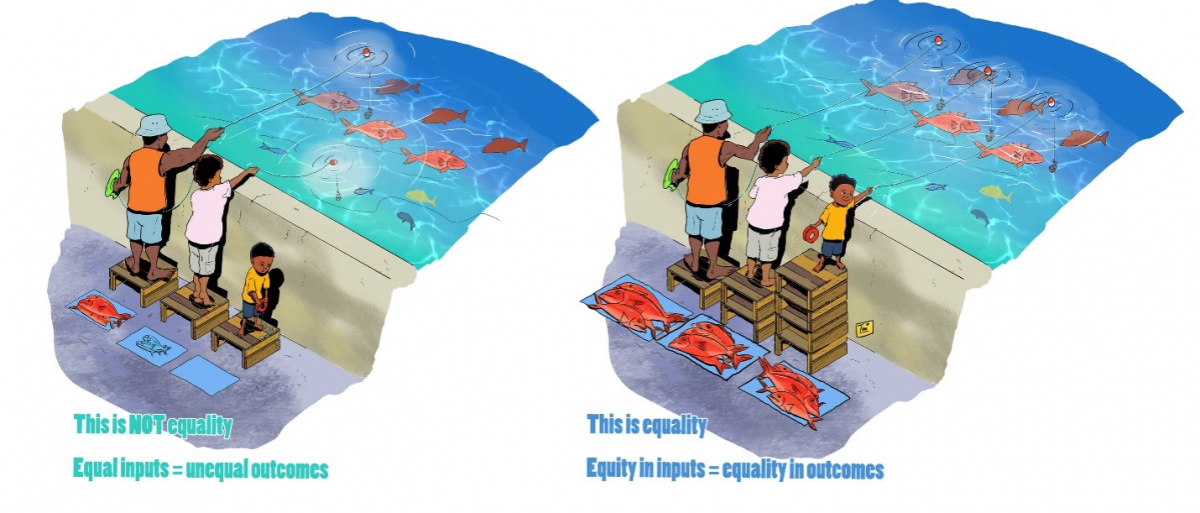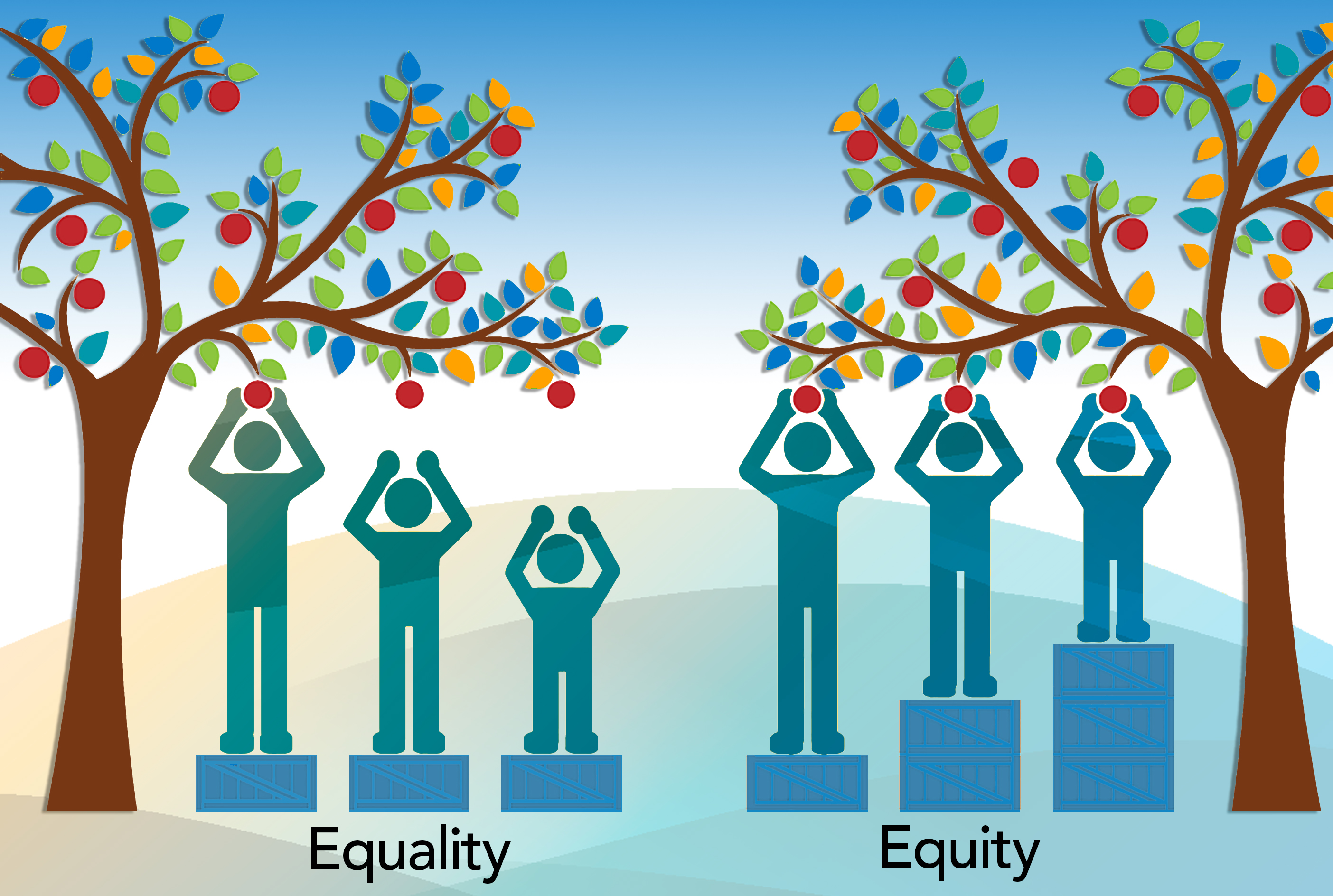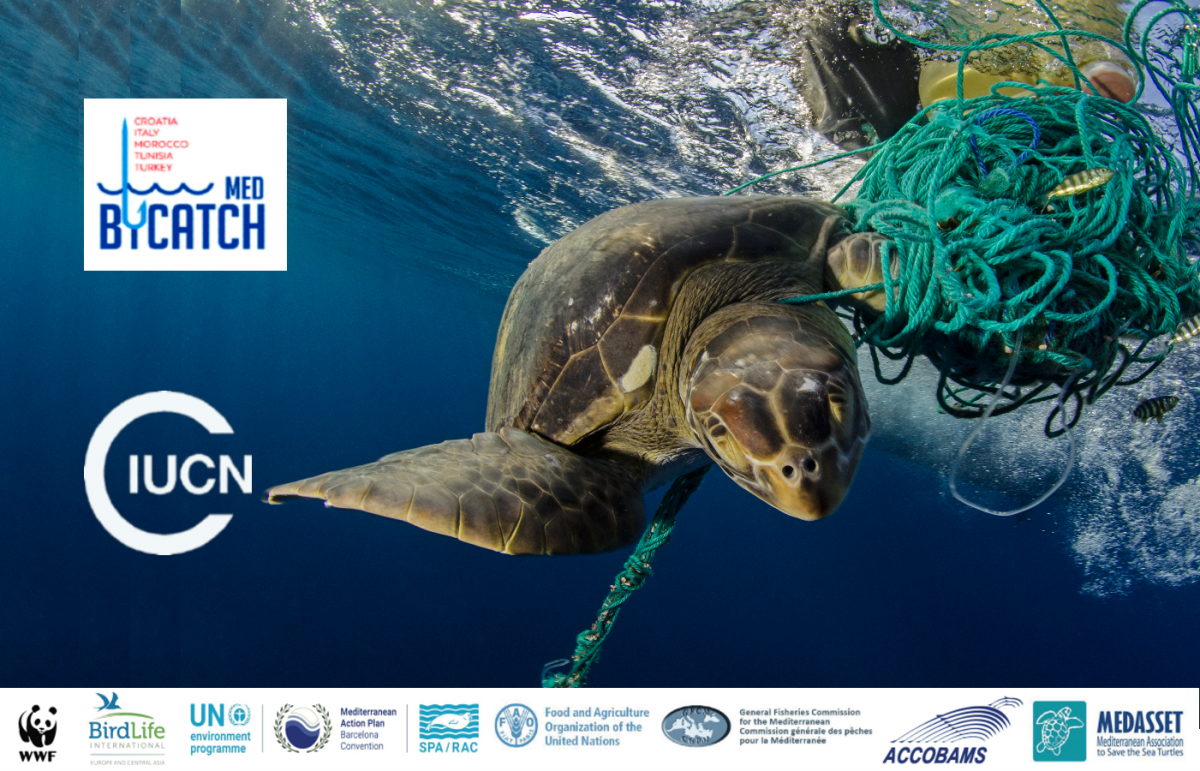Gender & fisheries: Equality vs equity
CEESP News: by Sangeeta Mangubhai, Wildlife Conservation Society *
Gender experts frequently talk about gender equality and gender equity, and although they sound familiar and are related terms, they have different meanings. Understanding these two terms is critical for a fair, just and socially inclusive society.
Figure 1a. Equality vs. equity graphics used by gender development practitioners. Original image idea by Craig Froehle. This image by Interaction Institute for Social Change | Artist: Angus Maguire. (interactioninstitute.org and madewithangus.com). Figure 1b © 2014, Saskatoon Health Region. Source: https://www.nwhu.on.ca/ourservices/Pages/Equity-vs-Equality.aspx
Two graphics have been repeatedly used to explain this important distinction between the two terms, and that, in fact, equity leads to equality. In one, three people are attempting to pick apples from a tree, while in the other three people are trying to watch a baseline match over a fence (Fig. 1a and 1b).
In the equality image, everyone is given a single box to stand on – in other words, there is equality because everyone has the exact same number and type of box. However, the outcome is not the same for everyone, and not everyone can pick those apples or see that baseball match. However, in the equity image, each person is given a different number of boxes (or none in the case of the baseball match) to create an equal outcome.
Over the last 12 months I have wracked my brains to try and find a fisheries equivalence that my colleagues might relate to. While I could not escape the boxes (representing inputs or resources provided), I am delighted to share a new graphic that I co-designed with Fijian artist Tui Ledua (Fig. 2).
 Photo: Sangeeta Mangubhai/WCS
Photo: Sangeeta Mangubhai/WCS
In this graphic, the wall is symbolic of the barriers that exist which create inequalities in our society.
- In the equality image you can see the boy cannot see over the wall, and therefore cannot cast his fishing line.
- The woman can cast a line, but she has to stand on her tip-toes, and even so, she can only reach a few fish in front of her, and only the small ones.
- The man on the other hand can cast his line further and reach the large fish.
In the equity image, each figure gets a different number of boxes, and everyone has the same fair chance of catching the big fish.
What this means is that if we want equality in outcomes from fisheries development, we may need to provide different resources or different amount of resources to different groups in the community. This may mean the intervention is unequal, but the end result is greater equality across groups in society.
* Wildlife Conservation Society, Fiji Country Program, 11 Ma’afu Street, Suva, Fiji. Email Address





